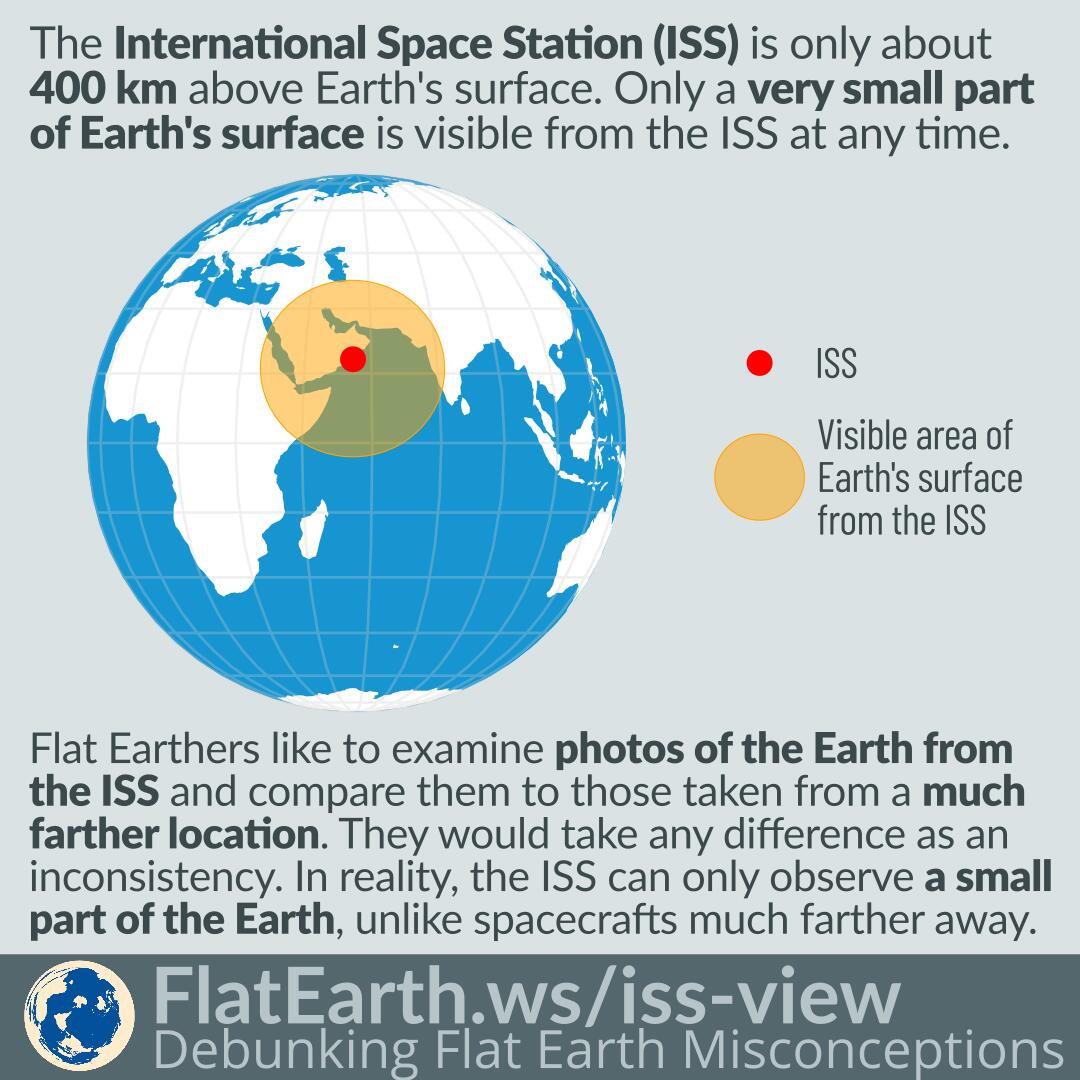The International Space Station (ISS) is only about 400 km above the Earth’s surface, only 6% farther from the center of the Earth than the Earth’s surface. Therefore, only a very small part of Earth’s surface is visible from the ISS at any time.
Flat-Earthers like to examine photos of the Earth from the ISS and compare them to those taken from a much farther location. They would take any difference as an inconsistency. In reality, the ISS can only observe a very small part of the Earth, unlike spacecraft much farther away.
Because the ISS is still very close to Earth’s surface, any picture of a feature on Earth’s surface will appear larger relative to the visible size of the Earth in the frame.
From the ISS, the entire Earth appears in a very wide 140° angular distance. There are not many cameras that can capture the whole earth from the ISS, and none of them are rectilinear. It is the reason a fisheye lens is often used to take photos from the ISS.
The Earthrise photograph from the Apollo 8 mission was taken using a camera with a 250mm lens and a 70mm sensor size, with an effective field of view of 17°. On the ISS, the same camera will not nearly be able to fit the entire Island of Great Britain.
References
- Earth angular size looking from the ISS – Space Exploration Stack Exchange


